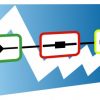Auto-pilot Wireless Networks can deliver championship level performance

Mobile Operators face business challenges every day that often start with their biggest asset – the network. These challenges are due to massive non-uniformity, constant change in subscriber behavior, and surging demand for bandwidth-intensive services. For example, consider the demands at a train station – a train pulls up, 200 people get off and they all have multiple devices that they want to connect to the network whether it be to download email, look at Snapchat, check Facebook, or view a Vine video, etc. Then, 10 minutes later they are gone. Or, a major sporting event where you have 80,000 people in attendance at the stadium who are all wanting to upload videos to social networking sites. Multiply these issues across the network and you can get an idea of the complexity.
Enter the power of automation – manual intervention by engineers to solve these challenges just won’t work anymore – it takes too long, is too resource-intensive, and has too many variables. Wireless networks must make the switch to “auto-pilot” in order to deliver optimal Quality of Experience to subscribers, and decisions should also be programmed to maximize revenue. Self Organizing Networks (SON) need to be more sophisticated in their approach – this can be achieved by using subscriber-generated data together with location intelligence that has a self-learning engine.
Want to find out more? – Take a look at our complimentary White Paper, Solving the Challenges of Cellular RAN Management with Next-Generation SON to learn more about the bullets below.
· The SON Challenge
· Extreme non-uniformity in mobile networks
· Revenue-aware, location-aware, subscriber-aware
· A self-learning approach
· SON customer use cases




